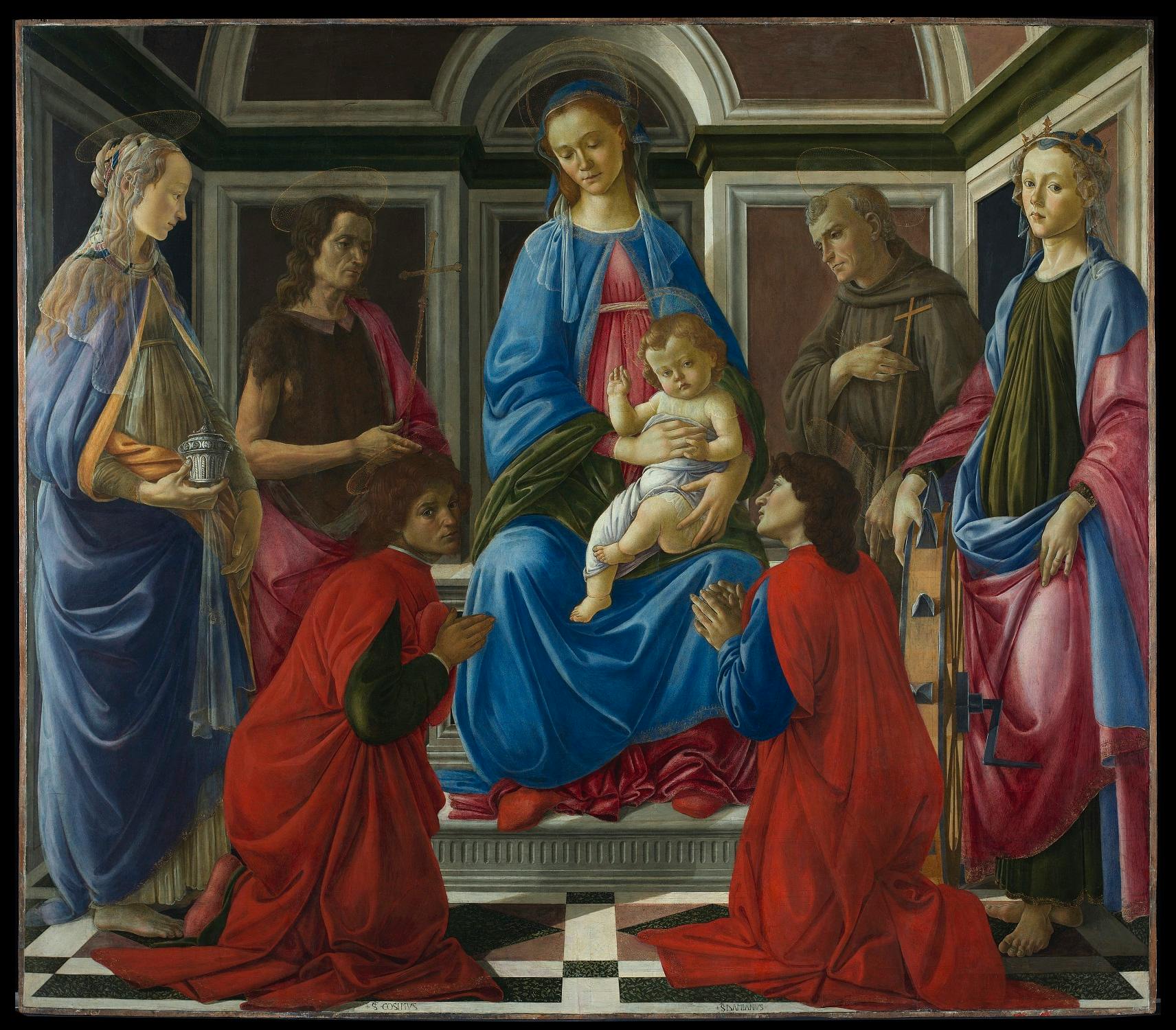Virgin and Child enthroned with the saints Mary Magdalene, John the Baptist, Francis of Assisi, Catherine of Alexandria, Cosmas and Damian
Sandro Botticelli (Florence, 1445 1510)
This panel is considered to be the first monumental piece commissioned from Botticelli, as well as one of his first altar pieces. It can be dated to around 1470, in terms of the stylistic similarities with the painting of the Fortitude [see artwork] (also in the Uffizi Galleries collection) painted int he same year.
The figures of the saints are similar to the models of Filippo Lippi, Botticelli’s teacher, while the classical setting, dominated with polychrome marble, inspired by Alberti, together with the skilled depiction of robes, the result of lengthy practise from life drawing, are reminiscent of Verrocchio’s workshop, where Botticelli most probably completed his training.
In spite of the importance of this altarpiece, almost nothing is known of its history. It became part of the collection belonging to the Galleries of Florence - first the Gallery of the Academy of Florence and then, from 1948, to the Uffizi – with the suppression of the Benedictine convent of Sant’Ambrogio in Florence, but the absence of saints linked to the order or any dedication to the church make it doubtful that this was its original destination.
The saints, Cosmas and Damian in the foreground are physician saints, identified by the inscriptions ‘S. COSIMUS’ - ‘S.DAMIANUS’, points to a commission linked to the Guild of Phisicians and Apotecaries or from the Medici family, for whom Botticelli painted his most famous works.
